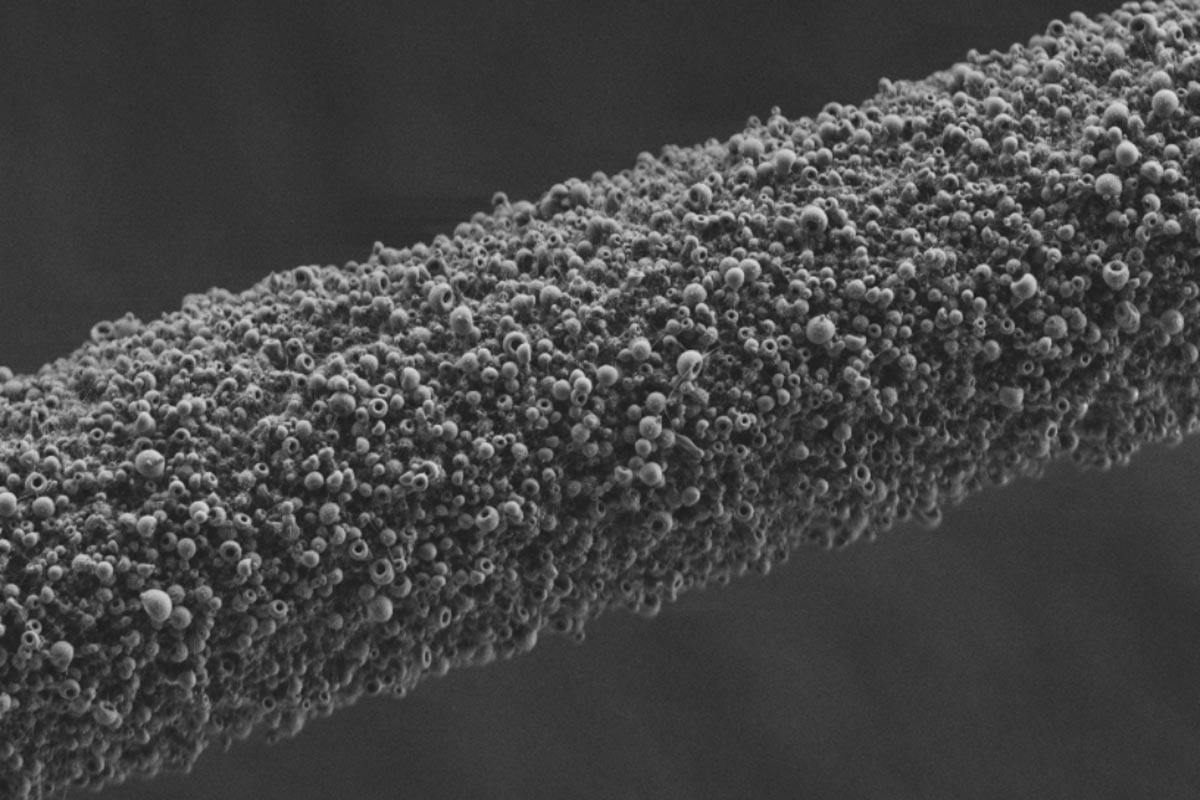The Science
The Impact
Researchers invented a unique way for different types of quantum technology to “talk” to each other using sound. For part of the work, they used the Center for Nanoscale Materials (CNM) and the Advanced Photon Source (APS), both DOE user facilities. The study provides a step towards bringing quantum technology closer to reality.
Summary
Communicating quantum information is a challenging task. It is difficult to move information stored in electron spin within a device. However, since different quantum systems represent quantum information in different ways, combining more than one type into a hybrid system could take advantage of the strengths of each one. For instance, optical photons can send quantum states across long distances. An electron’s spin state can store information, which allows scientists to expand the binary information storage system used in traditional computing. In this study, researchers created a hybrid quantum system that acoustically drives transitions in electron spins. The experiment showed a basis for mechanical (strain) control. Scientists then developed a theoretical model from a combination of direct experimental observation and density functional theory calculations. From all of this information, they illustrated different types of mechanical strain that drive longer-lasting spins. The material studied was silicon carbide, which has been shown recently to support long-lived spin states that can be accessed optically. The results offer theoretical understanding and experimental demonstrations of controlling the spin states in silicon carbide and provide a basis for applications in long-distance quantum communication, new approaches to quantum computation, as well as potential quantum sensing with MEMS – microelectromechanical systems.
Funding
The devices and experiments were supported by the Air Force Office of Scientific Research; material for this work was supported by the Department of Energy (DOE). SXDM measurements were performed at the Hard X-ray Nanoprobe Beamline, operated by the Center for Nanoscale Materials (CNM) and the Advanced Photon Source (APS), Argonne National Laboratory. S.J.W. and K.J.S. were supported by the NSF GRFP, C.P.A. was supported by the Department of Defense through the NDSEG Program, and M.V.H., F.J.H., A.N.C., G.G. and D.D.A. were supported by the DOE, Office of Basic Energy Sciences. This work made use of the UChicago MRSEC and Pritzker Nanofabrication Facility, which receives support from the SHyNE, a node of the NSF’s National Nanotechnology Coordinated Infrastructure.
Original post https://alertarticles.info



